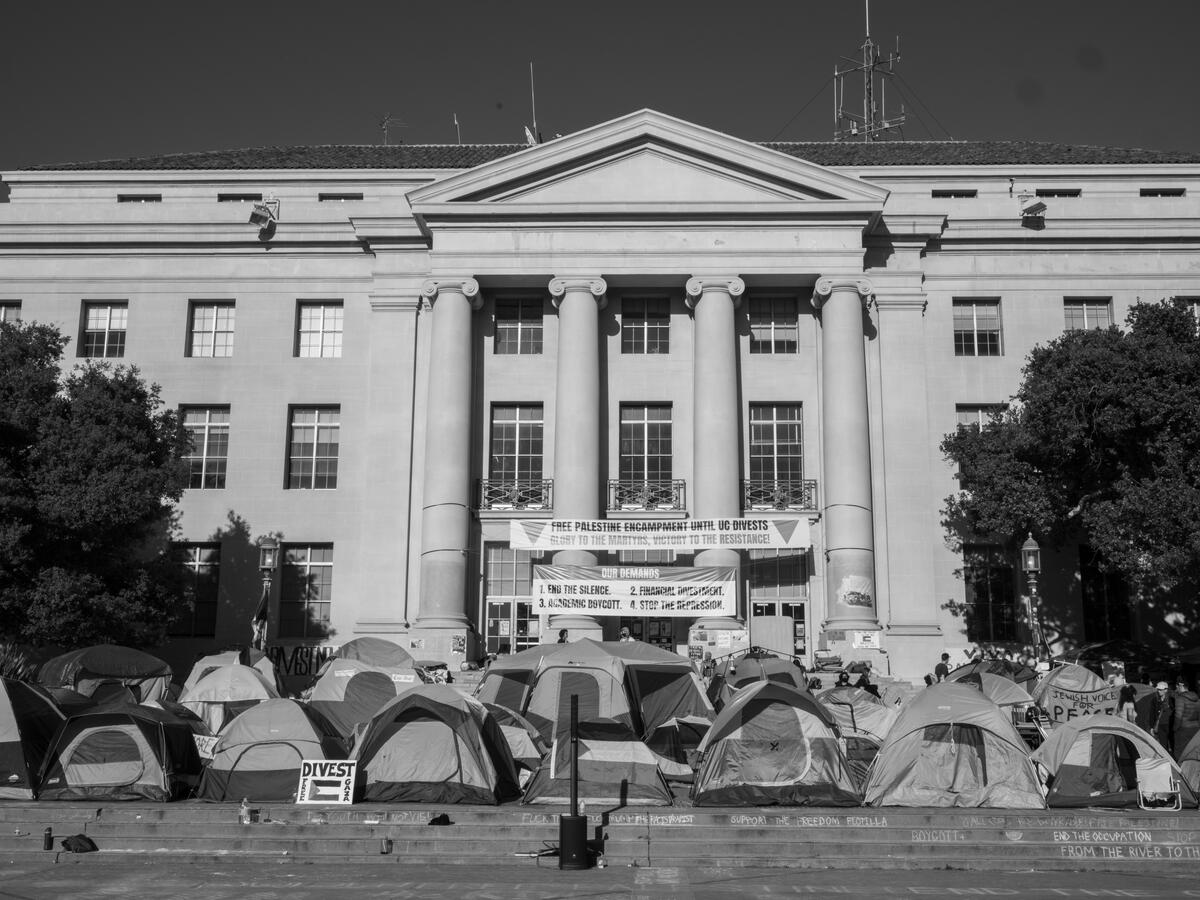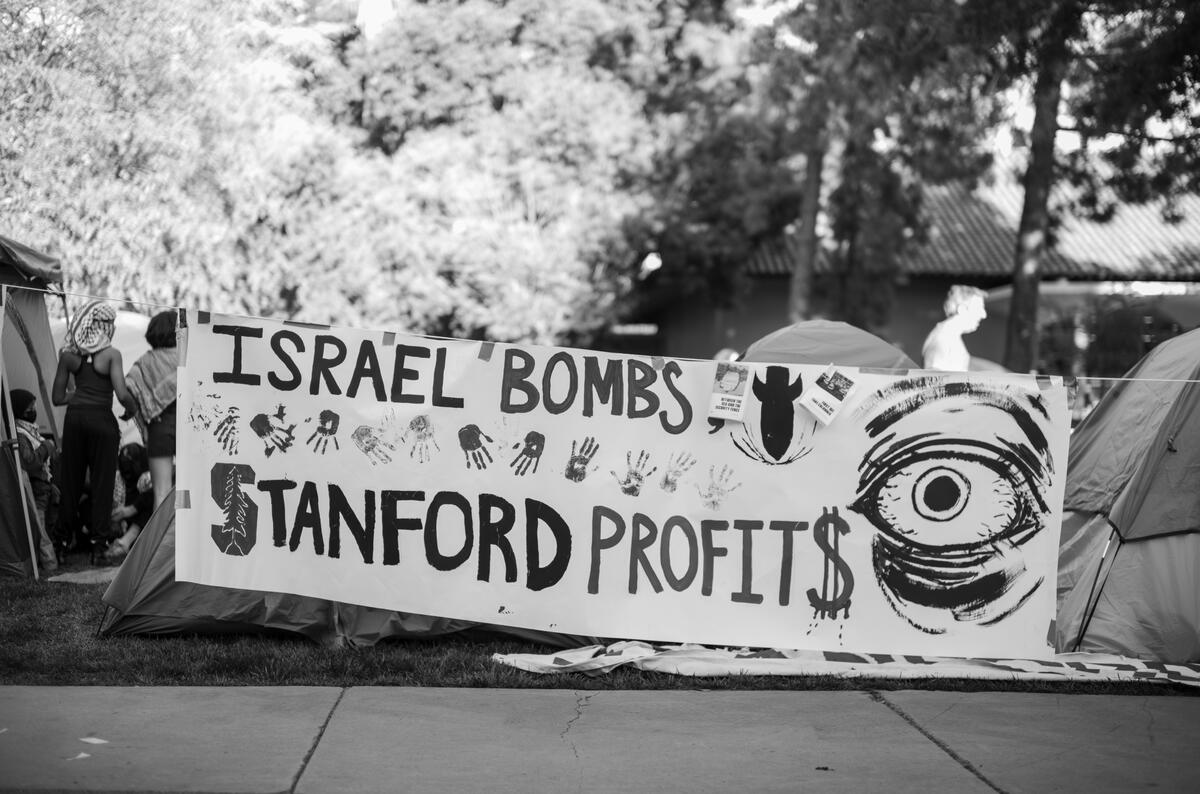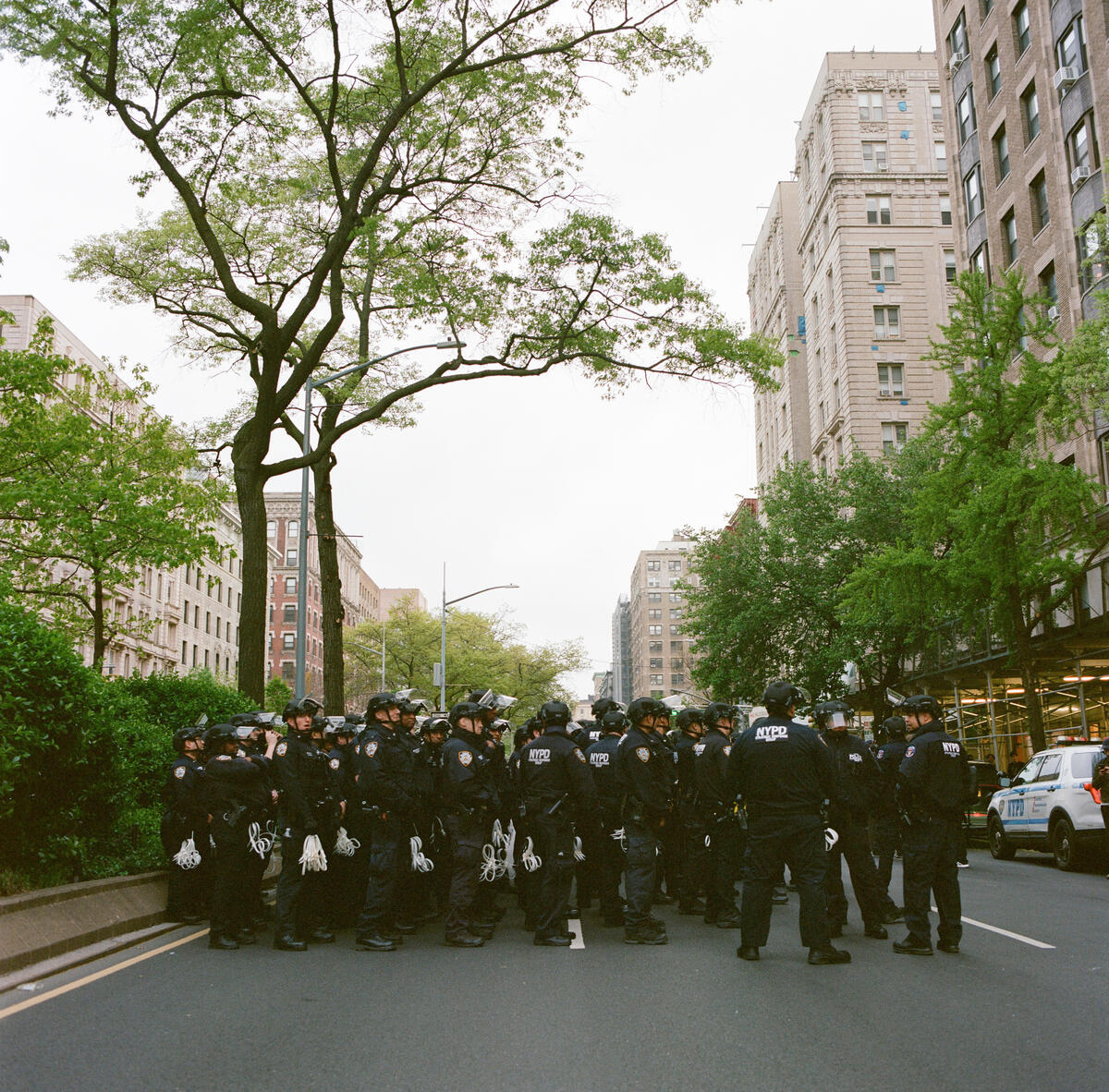Calls for Immediate Ceasefire on Campuses Across the US
Alessandra Sanguinetti and Jim Goldberg document solidarity encampments in California, while Sabiha Çimen covers rising tension in New York City
In April, a series of protests erupted across the United States beginning with solidarity encampments at Columbia University in New York and quickly gripping over 100 further college campuses. The students’ demands are clear: an end to Israel’s ongoing occupation of Palestinian territories, a lasting ceasefire in Gaza and the withdrawal of university investments from companies backing the war and the Israeli government.
Below, we explore a selection of images from Alessandra Sanguinetti, Jim Goldberg and Sabiha Çimen, who have documented events at the campuses of Stanford, the University of California, Berkeley, and Columbia in New York City.
On Saturday April 27, California-based Alessandra Sanguinetti and Jim Goldberg covered the events at the solidarity encampments at Stanford and the University of California, Berkeley.
“Free Palestine Encampment Until UC Divests,” reads a large banner at the entrance to the University of California’s Sproul Hall. “Our Demands: 1. End the Silence. 2. Financial Divestment. 3. Academic Boycott. 4. Stop the Repression,” is written in bold underneath, hanging over rows of tents pitched on the Hall’s steps.
“At both Berkeley and Stanford, the students were sitting in circles in quiet discussions, preparing and sharing food, cleaning the spaces, strumming guitars, and studying,” Sanguinetti describes. “The atmosphere at both universities buzzed with openness, acceptance, and curiosity from other students. A sense of mutual care and respect permeated the space, even extending to those who didn’t participate in the encampment.”
“The biggest sign at Stanford as you walked by was ‘Jews Say Ceasefire Now.’ At both Berkeley and Stanford the encampment students were from many ethnicities and backgrounds — Black, White, Muslim, Jewish, Asian, and Latino. Other students and faculty passing by stood around and read the signs, and spoke to the encampment students, asking questions or showing solidarity. On the sides of the encampments, we heard groups of students having intense and thoughtful discussions.”
“At both Stanford’s and Berkeley’s encampments, we split up — one of us went left, the other right, so as not to overlap with photos,” adds Jim Goldberg. “Stanford’s encampment was cordoned off by a rope, and hung from it were signs, posters, and banners — creating a porous wall of words. We were not allowed to cross in. An impromptu bulletin board for announcements was erected in one corner.
“Four participants spoke for a long time in one corner with five or six Jewish ‘counter’ protesters. They were engaged in a conversation that vacillated between trying to find common ground and becoming more heated. Ultimately, the counter-protesters raised their voices and hands and, in exasperation, walked away.
Berkeley was much the same — perhaps a bit more organized. Two boys ran through the camp with balloons trailing them, and two girls drew pictures amongst the slogans written on the pavement.”
Meanwhile, on Tuesday, April 30 and Wednesday, May 1, Sabiha Çimen documented scenes of escalating tensions at Columbia University for the New York Times. As protests reached a fever pitch on April 30, NYPD officers, many in riot gear, stormed the university in an attempt to quash the unrest, arresting about 300 people.






























